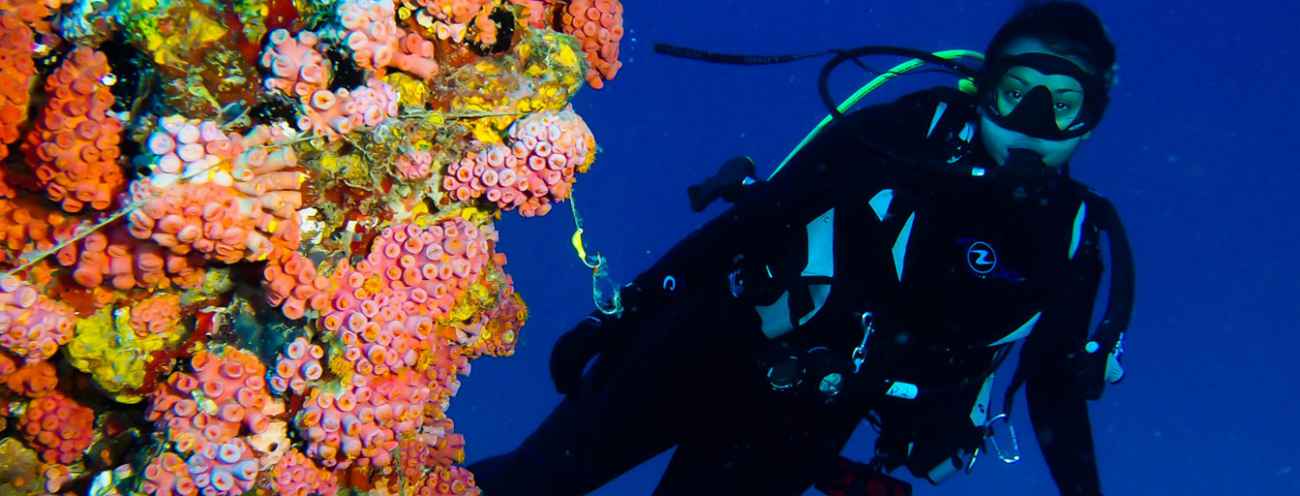
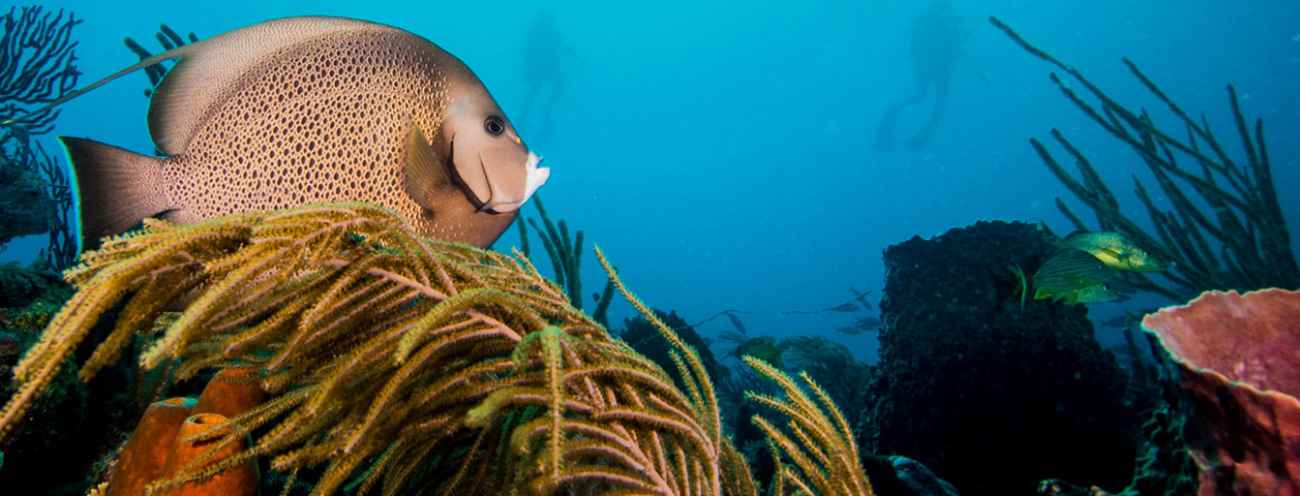
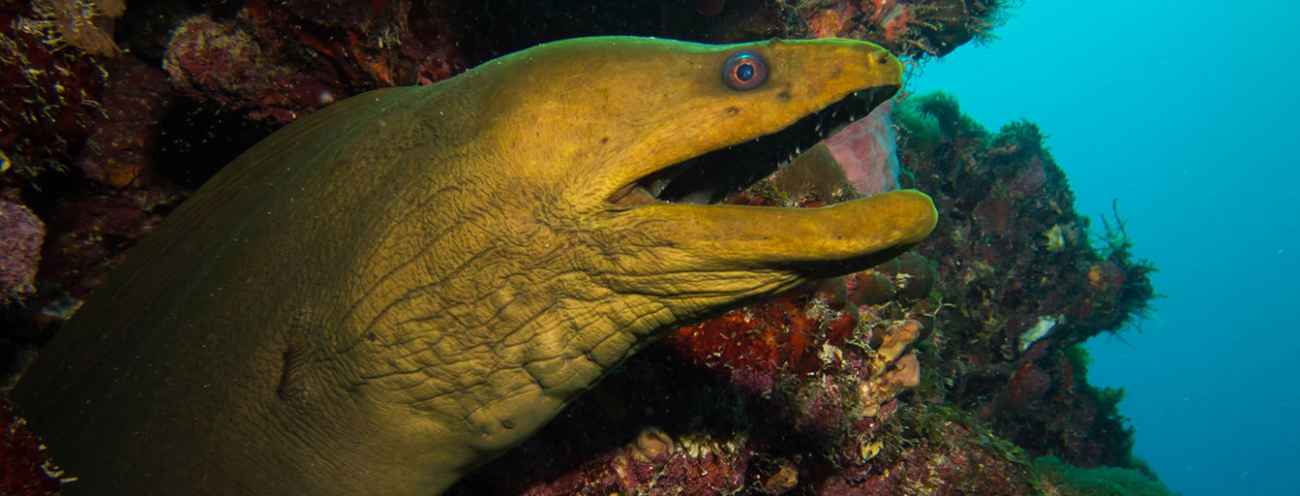
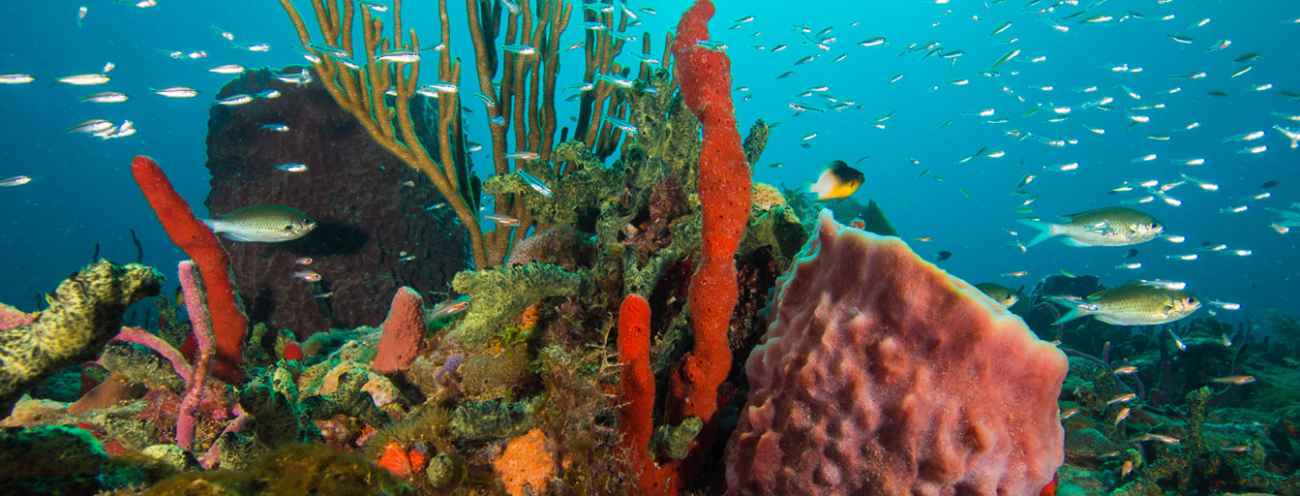
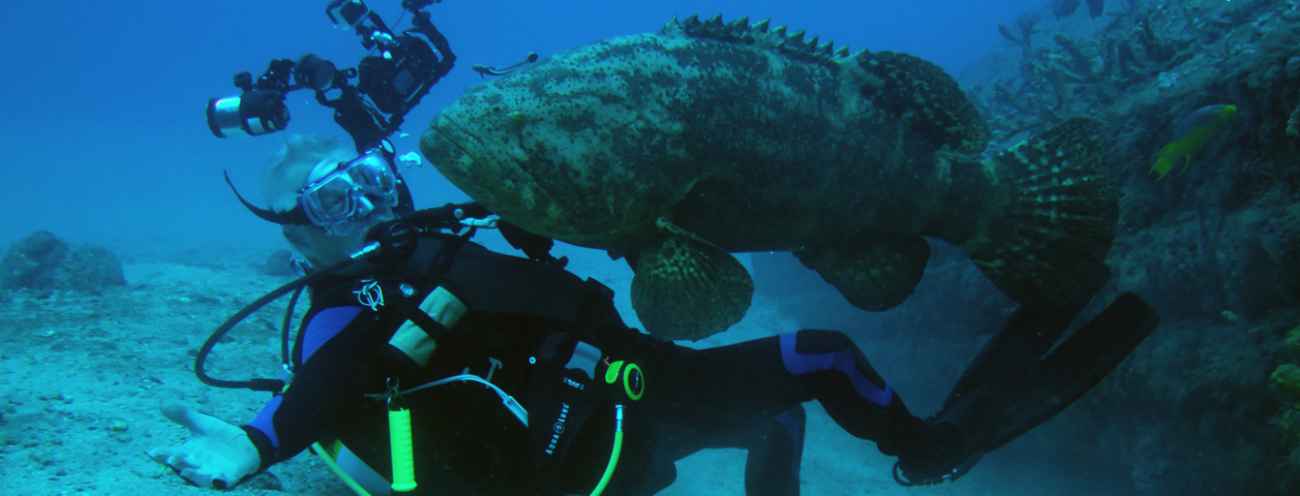
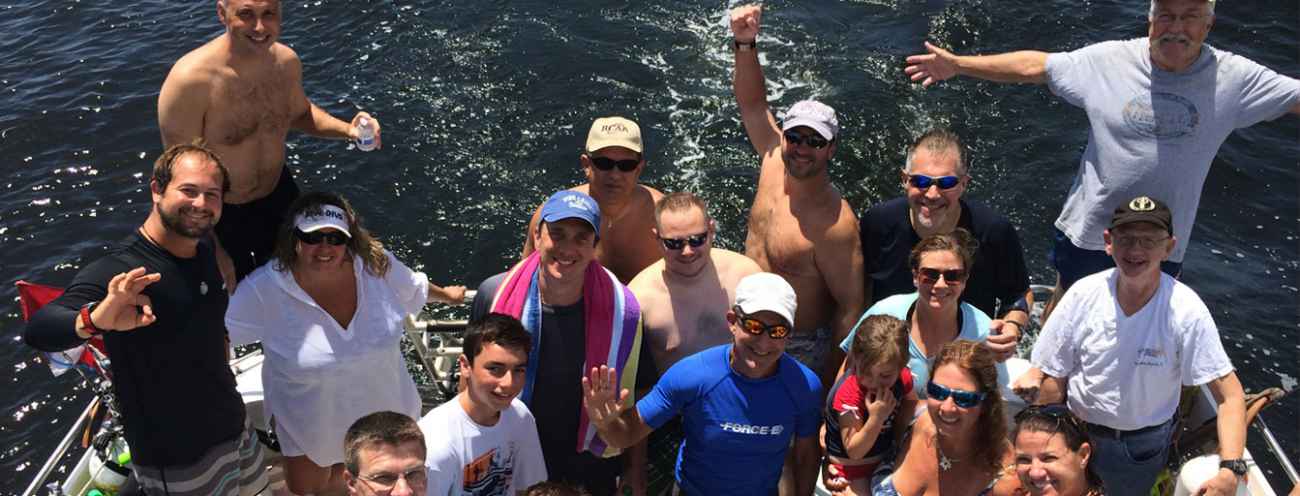
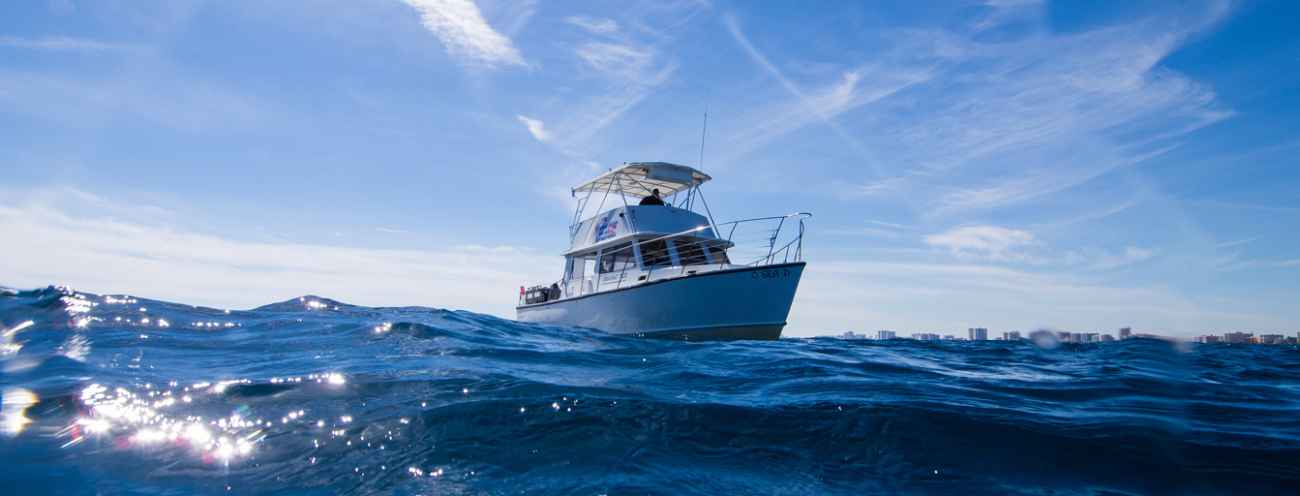
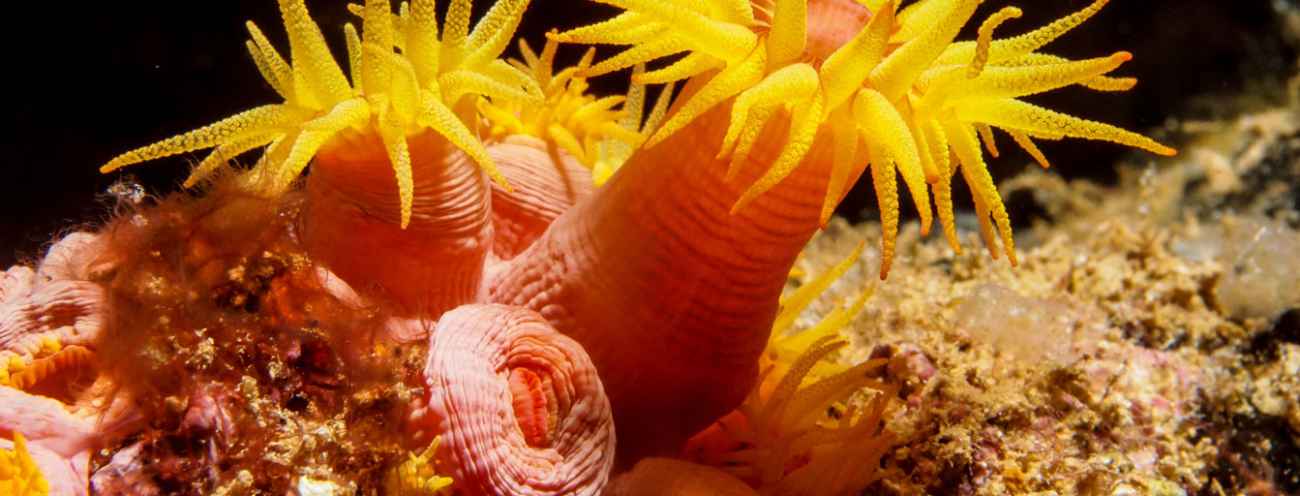
 Located 1-1/2 miles due east of the Pompano Pier on the outside edge of the third reef. A 85-foot schooner was sank in 78 feet of water on March,25 1989.
Located 1-1/2 miles due east of the Pompano Pier on the outside edge of the third reef. A 85-foot schooner was sank in 78 feet of water on March,25 1989.
 Formerly known as A.L. Spencer a tugboat sunk at August 15 of 1987 at depth 0f 70' feet. It has length of 65' feet with beam 16.5' feet. Excellent wreck to be done to test your navigation skills after done the Ancient Mariner. Some divers Have been have luck with lobsters in this wreck.
Formerly known as A.L. Spencer a tugboat sunk at August 15 of 1987 at depth 0f 70' feet. It has length of 65' feet with beam 16.5' feet. Excellent wreck to be done to test your navigation skills after done the Ancient Mariner. Some divers Have been have luck with lobsters in this wreck.
 It was a scary ride out to the site that June day in 1991 when the Ancient Mariner was being towed to her final resting place. The 165’ retired Coast Guard Cutter had fallen on hard times and already having sunk at her dock twice before, it was a coin toss to see if the old ship would weather the four foot seas that threatened to build as she went her last few miles. Commissioned in 1934 as the "Nemesis" the cutter performed coastal watch and lifesaving duties from her home port of St. Petersburg FL her entire career, save the war years when he was a sub hunter in the Gulf of Mexico and Southeast Atlantic. After being decommissioned in the 60’s she languished until her purchase and conversion to a floating restaurant and bar along Fort Lauderdale’s trendy new river district, eventually being renamed the Ancient Mariner. Before the renamed vessel could roll out her gangplank to serve her first drink, she sunk at the dock. Finally opening in late 1981, many months and nearly $100,000 later she gained international attention as a popular eatery and night spot.
It was a scary ride out to the site that June day in 1991 when the Ancient Mariner was being towed to her final resting place. The 165’ retired Coast Guard Cutter had fallen on hard times and already having sunk at her dock twice before, it was a coin toss to see if the old ship would weather the four foot seas that threatened to build as she went her last few miles. Commissioned in 1934 as the "Nemesis" the cutter performed coastal watch and lifesaving duties from her home port of St. Petersburg FL her entire career, save the war years when he was a sub hunter in the Gulf of Mexico and Southeast Atlantic. After being decommissioned in the 60’s she languished until her purchase and conversion to a floating restaurant and bar along Fort Lauderdale’s trendy new river district, eventually being renamed the Ancient Mariner. Before the renamed vessel could roll out her gangplank to serve her first drink, she sunk at the dock. Finally opening in late 1981, many months and nearly $100,000 later she gained international attention as a popular eatery and night spot.
Her glory days were short lived though, when in 1986 over 100 diners were caught up in the largest single outbreak of 'Hepatitis A' in Florida history, courtesy of an infected salad chef. The Ancient Mariner closed its doors forever. Left to her own, she eventually sunk at the dock a second time. The old boat showed she still had a fighting heart as she managed to stay afloat until she reached her final destination. The unusually blustery June day kept many local boats is port that day who would have customarily been out to wish the latest artificial reef a last farewell. In less than ideal weather, and mostly unseen by the rest of the world, she gave up and sunk obediently beneath the waves. Still with one last surprise to her, when the Ancient
Mariner struck the bottom, the planking that had been laid over her steel deck for the comfort of the patrons, shook loose and floated to the surface. It took several boats and many hours before the authorities collected the flotsam, during which time the crews jokingly referred to it as their "portable dance floor" Now covered with a nice carpet of hard and soft corals, you can still see places on her hull where she was riveted together. The Nemesis was built before the era of welded steel ships and, as the Ancient Mariner, is a piece of history in many ways yet today.
 Next to Captain Crunch, Captain Kangaroo and Captain Morgan, the Captain Dan is among our favorite Captains. Originally named the Hollyhock, this 175 foot long ex-USCG buoy tender, then mission ship "Good News" and later renamed the "Captain Dan was sunk as an artificial reef on February 20, 1990. She now lies in 110 feet of water in a North/South direction. The Captain Dan lies in an upright position and is easily penetrated. Taking only 15 minutes to arrive at the destination. the Captain Dan is one of the areas most popular wrecks. Visibility on the Dan is generally very good with an average of 60'. However, it is susceptible to moderate to strong currents. If you decide to take a spin on the Dan you will not be disappointed.
Next to Captain Crunch, Captain Kangaroo and Captain Morgan, the Captain Dan is among our favorite Captains. Originally named the Hollyhock, this 175 foot long ex-USCG buoy tender, then mission ship "Good News" and later renamed the "Captain Dan was sunk as an artificial reef on February 20, 1990. She now lies in 110 feet of water in a North/South direction. The Captain Dan lies in an upright position and is easily penetrated. Taking only 15 minutes to arrive at the destination. the Captain Dan is one of the areas most popular wrecks. Visibility on the Dan is generally very good with an average of 60'. However, it is susceptible to moderate to strong currents. If you decide to take a spin on the Dan you will not be disappointed.
A tug boat sitting up right at 70 feet and the tip is 50 feet, it is in good condition and have some penetration. This wreck is close to other wrecks that was sunk as part of Broward County Artificial Reef Program. Other Wrecks close by are Capt. Dede a concrete ragboat and the Emma Boggs an LCM vessel both within swimming distance. Also is shipwreck call Curry Barge a little bit away about 280 yards NE of the Emma Boggs with good navigation skills and breathing Nitrox is possible to see all.
 The Guy Harvey is our newest ship wreck. Built in Holland in 1957, this 185 foot freighter spent the last of her 10 years sailing between Haiti and the Lesser Antilles as the Lady Kimberly. She was sunk in 145 feet of water on May 10, 1997 courtesy of Guy Harvey and the Pompano Fishing Rodeo. Like most new wrecks, the Guy Harvey will take time to develop as an artificial reef site. First will come the soft coral and sponge growth, then the schools of small fish looking for shelter, and finally, big fish looking for small fish.
The Guy Harvey is our newest ship wreck. Built in Holland in 1957, this 185 foot freighter spent the last of her 10 years sailing between Haiti and the Lesser Antilles as the Lady Kimberly. She was sunk in 145 feet of water on May 10, 1997 courtesy of Guy Harvey and the Pompano Fishing Rodeo. Like most new wrecks, the Guy Harvey will take time to develop as an artificial reef site. First will come the soft coral and sponge growth, then the schools of small fish looking for shelter, and finally, big fish looking for small fish.
 Located 1-1/2 miles directly offshore from the Pompano Pier ( just north of Atlantic Blvd.). The 130-foot luxury schooner Panda was sunk in May 1987 as an artificial reef memorial for Jay Dorman. The beautiful sailing ship rests in 78 feet of water on her port side. The vessel was formerly owned by the Emperor of Vietnam and later used as a charter craft for Windjammer Cruises before fire damage in 1984. The schooner Alpha lies only 50 feet north.
Located 1-1/2 miles directly offshore from the Pompano Pier ( just north of Atlantic Blvd.). The 130-foot luxury schooner Panda was sunk in May 1987 as an artificial reef memorial for Jay Dorman. The beautiful sailing ship rests in 78 feet of water on her port side. The vessel was formerly owned by the Emperor of Vietnam and later used as a charter craft for Windjammer Cruises before fire damage in 1984. The schooner Alpha lies only 50 feet north.
 On December 7, 1987, a ship of huge proportions sank in a storm just one mile east of the Boca Raton Inlet. The ship was being towed to Brownsville, Texas where it was to be salvaged. Instead it sank on our door step and was discovered one month later by Captain David Turbeville. Today the Hydro Atlantic is considered to be one of the 10 best dives in the United States. Lying in 172 feet of water, the 320 foot long freighter is a real ship wreck, not a diver prepared, artificial reef wreck. A huge crane stands mid ship, with one of the ship's main anchors at its base. The winch is still on the bow and the engine is still in the engine room. This is a real wreck! Her deck is still crowded with equipment. Pipes that traverses the old hull from one pump to another. Cranes and giant winches still laden with cables. Barely recognizable, they are all covered with a thick blanket of coral, sponge and soft corals, like those in the picture above. Thousand of tropical fish dart in and out of every pipe and porthole seeking shelter from predators, while barracuda and shark lurk in the distant shadows. Rope, cable and fishing line cover almost every inch of the wreck. Years of strong currents, the effects of saltwater erosion and the immense growth of corals have all taken their toll on the ship's structure. Some walls of the superstructure have collapsed and the hull has started to crush under the weight of its deck and machinery providing new access to inner passages. As a true wreck, equipment intact, with such of abundance of growth and so many opportunity for penetration, the Hydro Atlantics is one the best wrecks in Florida and is a must for the serious wreck diver
On December 7, 1987, a ship of huge proportions sank in a storm just one mile east of the Boca Raton Inlet. The ship was being towed to Brownsville, Texas where it was to be salvaged. Instead it sank on our door step and was discovered one month later by Captain David Turbeville. Today the Hydro Atlantic is considered to be one of the 10 best dives in the United States. Lying in 172 feet of water, the 320 foot long freighter is a real ship wreck, not a diver prepared, artificial reef wreck. A huge crane stands mid ship, with one of the ship's main anchors at its base. The winch is still on the bow and the engine is still in the engine room. This is a real wreck! Her deck is still crowded with equipment. Pipes that traverses the old hull from one pump to another. Cranes and giant winches still laden with cables. Barely recognizable, they are all covered with a thick blanket of coral, sponge and soft corals, like those in the picture above. Thousand of tropical fish dart in and out of every pipe and porthole seeking shelter from predators, while barracuda and shark lurk in the distant shadows. Rope, cable and fishing line cover almost every inch of the wreck. Years of strong currents, the effects of saltwater erosion and the immense growth of corals have all taken their toll on the ship's structure. Some walls of the superstructure have collapsed and the hull has started to crush under the weight of its deck and machinery providing new access to inner passages. As a true wreck, equipment intact, with such of abundance of growth and so many opportunity for penetration, the Hydro Atlantics is one the best wrecks in Florida and is a must for the serious wreck diver
 In September 1987, the Broward County Artificial Reef Program sank the 240-foot Dutch freighter Poinciana, built in 1961 on her port side in 110 feet of water. The name was changed to Jim Atria, after Jim Atria who is a Broward County developer, diver and sport fisherman. In 1992, Hurricane Andrew moved the ship more than 1/4 mile offshore and sitting upright to a depth of 135 feet. Her 2 masts are intact, rise to 70 feet, the highest point of the wreck and are covered by various corals and sea fans, providing great photo opportunities when ascending from the main deck. Other beautiful spots for memorable shots are the corner of the main deck as it meets the wheelhouse on the starboard side which, in itself is covered with staggering growth, and several open hatches adorned with tremendous growth. Wreck divers are invited to explore the inside of several openings at the wheelhouse at 95 feet. For the naturalist, Black Groupers, and Hogfish can be found under the hull at the sand, Glassy Sweepers and Squirrelfish in the cargo hold, thousands of Snappers and Grunts hiding in nooks, schools of Barracuda hovering as you descend and Amberjacks speeding through thousands of swimming baitfish above. Twelve years of growth has made for a beautiful site, teeming with sea life, a favorite among local divers, standing out as one of the best.
In September 1987, the Broward County Artificial Reef Program sank the 240-foot Dutch freighter Poinciana, built in 1961 on her port side in 110 feet of water. The name was changed to Jim Atria, after Jim Atria who is a Broward County developer, diver and sport fisherman. In 1992, Hurricane Andrew moved the ship more than 1/4 mile offshore and sitting upright to a depth of 135 feet. Her 2 masts are intact, rise to 70 feet, the highest point of the wreck and are covered by various corals and sea fans, providing great photo opportunities when ascending from the main deck. Other beautiful spots for memorable shots are the corner of the main deck as it meets the wheelhouse on the starboard side which, in itself is covered with staggering growth, and several open hatches adorned with tremendous growth. Wreck divers are invited to explore the inside of several openings at the wheelhouse at 95 feet. For the naturalist, Black Groupers, and Hogfish can be found under the hull at the sand, Glassy Sweepers and Squirrelfish in the cargo hold, thousands of Snappers and Grunts hiding in nooks, schools of Barracuda hovering as you descend and Amberjacks speeding through thousands of swimming baitfish above. Twelve years of growth has made for a beautiful site, teeming with sea life, a favorite among local divers, standing out as one of the best.
 In the years right after the Mercedes I was sank, the prices of those rusting old hulks on the Miami river started to get pretty dear. Buying, cleaning and sinking a coastal freighter went from just over 10 thousand to just over a hundred thousand faster than you could say "Holy Shipwreck!". And then the prices REALLY took off. The 97’ tug "Airkok" was found and hauled up to Fort Lauderdale from Aruba where she was renamed "Jay Scutti" in honor of a distinguished member of the local maritime community, and sank in 1986 in 70’ of water with her top rising to about 56’. She sits proudly upright, somehow escaping the wrath of Hurricane Andrew, facing north and south. The tug provided excellent experience for novice wreck divers during her first half dozen years on the bottom. A local instructor even went so far as to run a 'cave line' from the large entrance way at the stern to the forward hatch, passing by the engine room and hold along the way. He put it there as a convenient place to train divers for going into the caves and caverns in northern Florida, the fact it was a handy aid to first-time wreck explorers was simply a bonus. The bountiful currents have blessed the Jay Scutti in ways greater than many of her sister artificial reefs. Phenomenal growth of soft corals and invertebrates have all but closed off the passageway through the tug. Her giant propeller now only allows reef fish to swim between her blades where once divers, the size of football players, once swam with ease. It is not uncommon to find a good sized Atlantic Stingray or two lounging , half buried, in the sand by her stern, and occasionally, a giant Horse Conch will be seen trying and take a short cut across the sand on the landward side of the wreck.
In the years right after the Mercedes I was sank, the prices of those rusting old hulks on the Miami river started to get pretty dear. Buying, cleaning and sinking a coastal freighter went from just over 10 thousand to just over a hundred thousand faster than you could say "Holy Shipwreck!". And then the prices REALLY took off. The 97’ tug "Airkok" was found and hauled up to Fort Lauderdale from Aruba where she was renamed "Jay Scutti" in honor of a distinguished member of the local maritime community, and sank in 1986 in 70’ of water with her top rising to about 56’. She sits proudly upright, somehow escaping the wrath of Hurricane Andrew, facing north and south. The tug provided excellent experience for novice wreck divers during her first half dozen years on the bottom. A local instructor even went so far as to run a 'cave line' from the large entrance way at the stern to the forward hatch, passing by the engine room and hold along the way. He put it there as a convenient place to train divers for going into the caves and caverns in northern Florida, the fact it was a handy aid to first-time wreck explorers was simply a bonus. The bountiful currents have blessed the Jay Scutti in ways greater than many of her sister artificial reefs. Phenomenal growth of soft corals and invertebrates have all but closed off the passageway through the tug. Her giant propeller now only allows reef fish to swim between her blades where once divers, the size of football players, once swam with ease. It is not uncommon to find a good sized Atlantic Stingray or two lounging , half buried, in the sand by her stern, and occasionally, a giant Horse Conch will be seen trying and take a short cut across the sand on the landward side of the wreck.